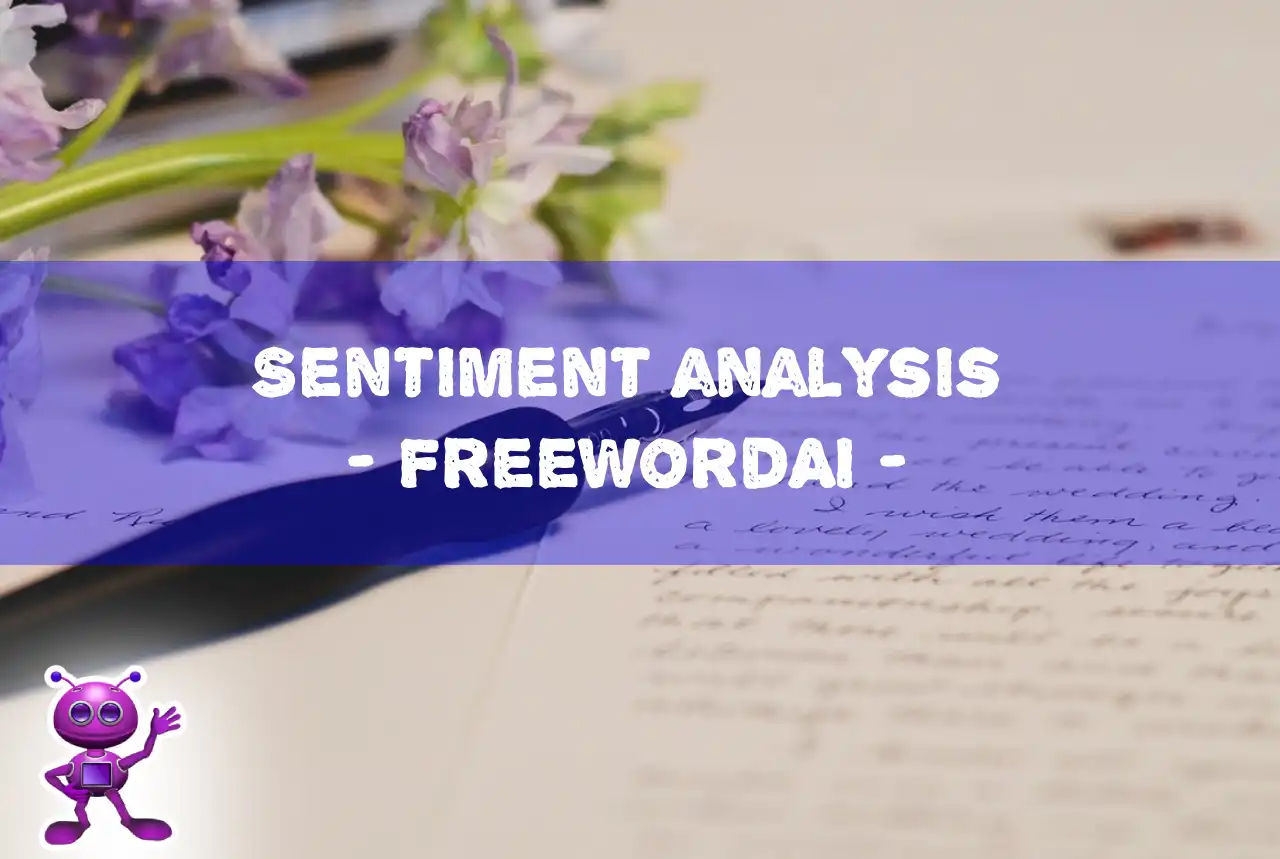
Features of our sentiment analysis tool
Welcome to our sentiment analysis tool! Allow us to introduce you to the array of capabilities it provides, all at no cost. Below are the features it offers:
- The sentiment analysis tool we offer is packed with useful features. It uses a smart sentiment analysis model to understand text.
- It can handle all sorts of language thanks to its natural language processing abilities.
- You can use it to check if text is positive, negative, or neutral.
- It's great for learning about sentiment analysis.
- It works by analyzing data and uses machine learning and neural networks.
- You get results in real-time, which is super handy.
- It's good at spotting sentiment in customer support chats, social media posts, and more.
- It helps with understanding what people think and feel about brands or topics.
- Overall, our sentiment analysis tool is simple to use and gives you valuable insights.
About our sentiment notation system
| Sentiment Range | Description |
|---|---|
| -100 to -80 | 😠 Extremely negative sentiment |
| -79 to -60 | 😡 Very negative sentiment |
| -59 to -40 | 😞 Quite negative sentiment |
| -39 to -20 | 😔 Moderately negative sentiment |
| -19 to -1 | 🙁 Slightly negative sentiment |
| 0 | 😐 Neutral sentiment |
| 1 to 20 | 🙂 Slightly positive sentiment |
| 21 to 40 | 😊 Moderately positive sentiment |
| 41 to 60 | 😃 Quite positive sentiment |
| 61 to 80 | 😄 Very positive sentiment |
| 81 to 100 | 😍 Extremely positive sentiment |
About our sentiment analysis model
Our sentiment analysis model stands out by its constant updates, ensuring it stays current with evolving sentiment analysis trends each year.
This approach sets us apart from other models that lack this adaptability.
What makes us different from other models?
It's our commitment to keeping pace with the changing landscape of sentiment analysis.
While other models may become outdated over time, ours remains relevant and effective, thanks to our dedication to continuous improvement and updating.
This ensures that our users benefit from the most accurate and up-to-date sentiment analysis available.
About natural language processing
Natural language processing (NLP) is the technology used to enable computers to understand, interpret, and generate human language in a way that is both meaningful and useful.
For example, NLP allows us to analyze customer feedback, social media posts, and product reviews to determine sentiment.
Within our sentiment analysis, NLP helps to identify key words and phrases, understand context, and classify text into positive, negative, or neutral categories.
By leveraging NLP techniques, we can extract valuable insights from vast amounts of textual data, enabling businesses to make informed decisions based on customer sentiment.
Explanation of positive negative neutral
In the context of sentiment analysis, we categorize sentiments into three main groups: positive, negative, and neutral.
Positive sentiment refers to feelings of satisfaction, happiness, or approval. For example, a customer might express positive sentiment in a product review if they are delighted with their purchase.
Negative sentiment, on the other hand, reflects dissatisfaction, anger, or disappointment. An example could be a negative comment on social media about poor customer service.
Neutral sentiment indicates a lack of strong emotion or opinion. It often occurs when the text does not express a clear positive or negative sentiment, such as factual statements or general observations.
By analyzing text data and assigning these sentiment labels, sentiment analysis tools help businesses understand public opinion, customer feedback, and overall sentiment trends.
Using sentiment analysis in brand monitoring
Brand monitoring involves tracking mentions of a brand across various platforms such as social media, news articles, and customer reviews. By incorporating sentiment analysis into brand monitoring efforts, businesses can gain valuable insights into how their brand is perceived by the public.
For instance, sentiment analysis can help identify positive mentions that highlight successful marketing campaigns or satisfied customers. Conversely, it can flag negative mentions that indicate areas for improvement, such as negative reviews or customer complaints.
Additionally, sentiment analysis provides real-time feedback, allowing businesses to promptly address issues or capitalize on positive sentiment. By leveraging sentiment analysis tools, businesses can better understand public opinion, monitor brand reputation, and make informed decisions to enhance brand perception and customer satisfaction.
Analyze sentiment for AI content
One of the most common problems with AI content is its tendency to have a very neutral sentiment score.
This means that the content lacks emotional tone, which can make it less engaging for readers.
To address this issue, it's essential to conduct sentiment analysis every time you use AI-generated content.
Sentiment analysis helps determine whether the content conveys positive, negative, or neutral emotions.
By analyzing the sentiment of AI-generated content, businesses can ensure that it resonates with their audience and effectively communicates the intended message.
Additionally, sentiment analysis allows businesses to make adjustments to the content as needed, such as adding emotional language or adjusting the tone to better align with their brand voice.
By incorporating sentiment analysis into their workflow, businesses can enhance the quality and effectiveness of their AI-generated content.
FAQ
What do you mean by sentiment analysis?
Sentiment analysis evaluates and understands emotions expressed in text data. It determines whether the sentiment is positive, negative, or neutral. For example, it can gauge public opinion in customer reviews or social media posts.
How is NLP used in sentiment analysis?
Natural language processing (NLP) techniques are used to analyze and interpret text data for sentiment. NLP helps identify key words, understand context, and classify sentiment. It's essential for accurately determining emotions conveyed in text for sentiment analysis.
What are the three types of sentiment analysis?
The three types of sentiment analysis are:
Document-level analysis, which evaluates sentiment of entire documents.
Sentence-level analysis, which assesses sentiment at the sentence level.
Aspect-based analysis, which focuses on specific aspects or features within text.
Can ChatGPT do sentiment analysis?
ChatGPT, as a natural language processing model, can perform sentiment analysis. While it's not specifically designed for sentiment analysis, it can understand and interpret text, making it capable of analyzing sentiment to some extent.
